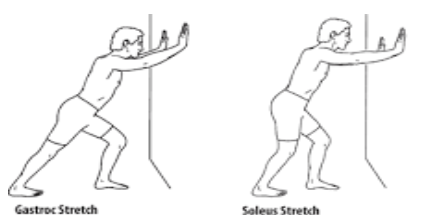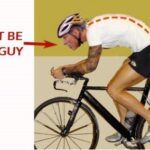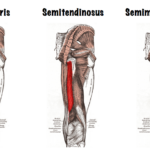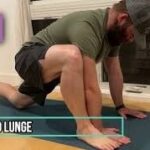A common sports injury that athletes such as runners, tennis players, and basketball players deal with is the calf strain. A calf strain is a tear of the muscle fibers in the back of the lower leg which consists of the Gastrocnemius and Soleus muscles. Symptoms can include a sudden sharp pain at the back of the lower leg, tenderness to the touch, bruising, and swelling. The swelling and bruising may appear within hours or days after the injury. Calf strains are graded on a scale from 1 to 3: 1 being a minor strain to 3 being a full rupture which a medical professional can evaluate and diagnose.
Differentiating Gastrocnemius and Soleus strains
![[1]](https://images.squarespace-cdn.com/content/v1/568c1797df40f37b331c4d04/1523472173689-PONS51WURATU0684Z8NQ/%5B1%5D)
[1]
The Gastrocnemius is the larger and more powerful of the two calf muscles and is responsible for propulsion during more dynamic movements like sprinting and jumping. A tear in the Gastrocnemius is more common because it is a larger muscle that crosses over the knee and ankle joints while also having a high density of type two fast twitch muscle fibers.
The Soleus is the smaller muscle of the two and aids running long distances. A Soleus strain is considered low risk because it only crosses over the ankle and consists of type one slow twitch muscle fibers.
In rare cases, coexisting strains of the Gastrocnemius and Soleus muscles can happen.
Causes of calf strains
A strain is an over-stretching or tearing of the muscle. Calf strains can be caused by sudden or excessive pushing off movements from jumping or quick changes of direction.
A shortened muscle caused by overuse or a muscle imbalance may be more susceptible to strains.
Often, wearing high heels can cause shortening of the calf muscles and lead to a higher risk of a strain.
Treatment
The principles of
P.R.I.C.E. which stands for protection, rest, ice, compression, and elevation should be used as soon as possible after the injury and generally continued during the first 24-72 hours.
After the initial acute treatment, treatments can differ depending on the grade of the strain. Strengthening, passive stretching, and massage techniques can be used; a medical professional will guide you as to the best course of action depending on the severity of the strain.
How to prevent calf strains
![[6]](https://images.squarespace-cdn.com/content/v1/568c1797df40f37b331c4d04/1523472239027-HSEAE6SURXJQ9DUR5P6C/AT_2.png)
[6]
There are several ways to prevent calf strains for any type of sport or activity.
It is always important to make sure that your muscles are properly warmed up before starting activity. This gets the nervous system out of a resting state and gets blood flow to the muscles and can be done by dynamic stretching and/or movements. Jumping rope is an example of a great way to warm up the calves.
After you finish your activity, static stretching is key as this will lengthen the muscles that have been actively contracting and shortening. To the right is an illustration of a Gastrocnemius and Soleus stretch.
A massage therapist can find trigger points, potential weak spots, and break up adhesions in the calf to help proactively avoid future strains.
References (viewed 4/11/18):
- http://www.sportsinjuryclinic.net/sport-injuries/ankle-achilles-shin-pain/calf-strain
- https://www.physio-pedia.com/Calf_Strain
- https://www.ncbi.nlm.nih.gov/pmc/articles/PMC2697334/
- https://www.active.com/running/articles/how-runners-can-prevent-achilles-tendon-and-calf-injuries
- http://www.ouh.nhs.uk/patient-guide/leaflets/files/10921Pcalfstrain.pdf
- http://kennedybrotherspt.com/app/uploads/2017/05/AT_2.png
This article/video is for educational purposes only; do not attempt without your physician’s clearance. If you are in pain or injured, see your physician.
Copyright © Vidal Sports LLC 2018







